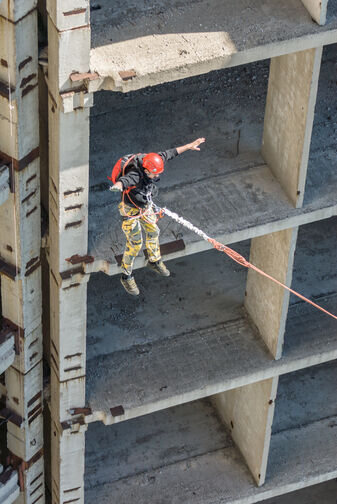


This article explores the role of ladder fall protection in meeting OSHA standards, reducing liability, and protecting workers across industrial job sites
Falls from height remain one of the leading causes of workplace injuries and fatalities across the construction, manufacturing, utility, and maintenance industries. With updated OSHA regulations and growing emphasis on proactive safety management, having a fall arrest equipment checklist for 2025 is essential for protecting workers and ensuring legal compliance.
Here’s everything you need to evaluate and maintain in your fall arrest system this year
The harness is the core component of any personal fall arrest system (PFAS). In 2025, ensure:
Straps are free from frays, tears, cuts, or chemical damage
Buckles and D-rings function properly and are not corroded
Labels and serial numbers are legible for compliance tracking
Harness fits the user correctly and is adjusted properly
Your system should include either a lanyard or a self-retracting lifeline (SRL)—depending on the work environment. For both devices, inspect for:
Frayed webbing or wire rope
Missing or damaged shock absorbers
Snap hooks and carabiners that fail to lock or are bent
Retraction speed (for SRLs) – ensure smooth and responsive movement
A fall arrest system is only as strong as its anchor. In 2025, all anchor points must:
Be rated for at least 5,000 lbs. per attached worker
Be clearly marked and documented
Undergo structural verification annually
Be installed by qualified personnel
For horizontal or vertical work environments, lifeline systems play a key role. Ensure:
Tensioning devices work properly
All end anchors are secure
Cables/wires show no rust, kinks, or signs of stress
System matches site-specific requirements (length, incline, number of users)
Fall arrest equipment is only effective when used properly. OSHA requires that all personnel:
Receive training on fall protection equipment use, inspection, and emergency procedures
Participate in documented refresher training annually
Log each use (especially on SRLs and lanyards) to track lifecycle and maintenance
Invest in digital safety log platforms for easier tracking in 2025.
Proper storage extends the life of your fall arrest gear. Ensure that:
Equipment is stored in a dry, cool, and clean area
Items are hung or placed neatly—not piled or compressed
Chemicals and oils are kept far from harnesses and lanyards
Each item has an inspection tag or tracking system
In 2025, safety leaders must go beyond basic compliance—they need a proactive, structured approach. Using this fall arrest equipment checklist ensures your team has the tools and knowledge to work safely at height, reduce liability, and remain OSHA-compliant
Answer:
A typical fall arrest system includes a full-body harness, a connecting device such as a lanyard or self-retracting lifeline (SRL), and an anchorage point. In many cases, lifeline systems (vertical or horizontal) are also used, especially for work on roofs or tall structures
Answer:
Fall arrest equipment must be visually inspected before each use and undergo a formal inspection at least once annually by a competent person. Equipment showing signs of wear, damage, or malfunction should be removed from service immediately
Answer:
As of 2025, OSHA continues to require fall protection at:
4 feet in general industry
6 feet in construction
Any height when working over dangerous equipment
Fixed ladders over 24 feet must have a ladder safety system or personal fall arrest system installed. Equipment must meet the latest ANSI and OSHA standards.
Answer:
No. After a fall has occurred, all components of the fall arrest system involved in the incident must be removed from service immediately and inspected by a qualified professional. Most components, especially lanyards with shock absorbers, must be replaced
Answer:
Replace fall arrest equipment if you notice:
Frayed or cut straps or cables
Rust, corrosion, or broken stitching
Deformed hooks or connectors
Expired manufacturer date or inspection tag
Failed functionality during inspection (e.g., slow SRL retraction)
